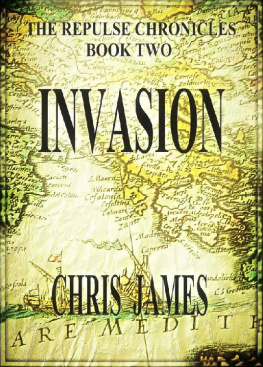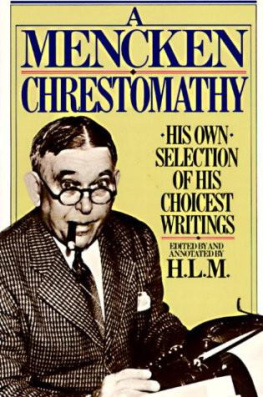I
HENRIK IBSEN
Table of Contents
THE INDIVIDUALIST
The Kingdom of God is within you
I
Ferdinand Brunetire has declared that "there can be no tragedy without a struggle; nor can there be genuine emotion for the spectator unless something other and greater than life is at stake." This so exactly defines the dramas of Henrik Ibsen that it might have been specifically written to describe their dramatic and ethical content. Whatever else Ibsen's works may be, they are first soul dramas; the human soul is not only their shadowy protagonist, but it is the stake for which his characters breathlessly game throughout the vast halls of his poetic and historic plays and within those modern middle-class apartments, where the atmosphere seems rarefied by the intensity of the struggle. "Greater than life" means for Ibsen the immortal soulimmortal not in the theologic, but generic sense; the soul of the species, which never had a beginning and never can have an end. With this precious entity as pawn on Ibsen's dramatic chess-board, the Brunetire dictum is perfectly fulfilled.
Let us apply to him and his plays a symbol; let us symbolize the arch-symbolist. Ibsen is an open door. The door enacts an important rle with him. Nora Helmer, in A Doll's House, goes out of the door to her new life, and in The Master Builder, Hilda Wangel, typifying the younger generation, enters to Solness. An open door on the chamber of the spirit is Ibsen. Through it we view the struggle of souls in pain and doubt and wrath. He himself has said that the stage should be considered as a room with the fourth wall knocked down so that the spectators could see what is going on within the enclosure. A tragic wall is this missing one, for between the listener and the actor there is interposed the soul of the playwright, the soul of Ibsen, which, prism-like, permits us to witness the refractions of his art. This open door, this absent barrier, is it not a symbol?
What does Henrik Ibsen mean to his century? Is he dramatist, symbolist, idealist, optimist, pessimist, poet, or realist? Or is he a destructive, a corroding force? Has he constructive giftsaside from his technical genius? He has been called an anarchic preacher. He has been described as a debaser of the moral coin. He has been ranged far from the angels, and his very poetic gifts have been challenged. Yet the surface pessimism of his plays conceals a mighty belief in the ultimate goodness of mankind. Realist as he is, his dramas are shot through with a highly imaginative symbolism. A Pegasus was killed early under him, as Georg Brandes says; but there remains a rich remnant of poesy. And may there not be deduced from his complete compositions a constructive philosophy that makes for the ennoblement of his fellow-beings?
Ibsen is a reflective poet, one to whom the idea presents itself before the picture; with Shakespeare and Goethe the idea and form were simultaneously born. His art is great and varied, yet it is never exercised as a sheer play of form or colour or wit. A Romantic originally, he pays the tax to Beauty by his vivid symbolism and his rare formal perfections. And a Romantic is always a revolutionist. Embittered in youthproud, self-contained, reticenthe waged war with life for over a half-century; fought for his artistic ideals as did Richard Wagner; and, like Wagner, he has swept the younger generation along with him. He, the greatest moral artist of his century, Tolstoy not excepted, was reviled for what he had not said or doneso difficult was it to apprehend his new, elusive method. A polemist he is, as were Byron and Shelley, Tolstoy and Dickens, Turgenev and Dostoevsky. Born a Northman, he is melancholic, though not veritably pessimistic of temperament; moral indignation in him must not be confounded with the pessimism that sees no future hope for mankind. The North breeds mystics. Shakespeare would have made his Hamlet a Scandinavian even if the legendary Hamlet and the earlier play had not existed. The brief, white nights, the chilly climate, the rugged, awful scenery, react on sensitive natures like Ibsen's. And then the various strains in his blood should not be forgottenDanish, German, Norwegian, and Scotch. Thus we get a gamut of moodsphilosophic, poetic, mystic, and analytic. And if he too frequently depicts pathologic states, is it not the fault of his epoch? Few dramatists have been more responsive to their century.
II
The drama is the domain of logic and will; Henry Becque called it "the art of sacrifices." The Ibsen technic is rather tight in the social dramas, but the larger rhythms are nowhere missing. The most artificial of art forms, the drama, is in his hands a mirror of many reverberating lights. The transubstantiation of realities is so smoothly accomplished that one involuntarily remembers Whistler's remark as to art being only great when all traces of the means used are vanished. Ibsen's technic is a means to many ends. It is effortless in the later playsit is the speech of emotion, the portrayal of character. "Qui dit drame, dit caractre," writes Andr Gide. Ibsen's content conditions his form. His art is the result of constraint. He respects the unities of time, place, action, not that he admires the pseudo-classic traditions of Boileau, but because the rigorous excision of the superfluous suits his scheme. Nor is he an extremist in this question of the unities. Like Renan, the artist in him abhors "the horrible mania of certitude." The time-unit in his best plays ranges from one to two days; the locality is seldom shifted further than from room to garden. As he matured his theatrical canvas shrank, the number of his characters diminished. Even the action became less vivacious and various; the exteriorization of emotional states was substituted for the bustling, vigorous life of the earlier plays. Yetalways drama, dynamic not static.
His dialoguea spoken, never a literary onevaries from extreme naturalism to the half-uttered sentences, broken phrases, and exclamations that discloseas under a burning lightthe sorrow and pain of his men and women. One recalls in reading the later pieces the saying of Maurice Barrs, "For an accomplished spirit there is but one dialoguethat between our two egosthe momentary ego that we are and the ideal one toward which we strive." The Ibsen plays are character symphonies. His polyphonic mastery of character is unique in the history of the drama; for, as we shall presently show, there is a secondnay, a thirdintention in his dialogue that give forth endless repercussions of ideas and emotions.
The mental intensity of Ibsen is relentless. Once, Arthur Symons showing Rodin some Blake drawings, told the French sculptor, "Blake used literally to see these figures; they are not mere inventions.""Yes," replied Rodin, "he saw them once; he should have seen them three or four times." Ibsen's art presents no such wavering vision. He saw his characters not once but for many months continuously before, Paracelsus-like, he allowed them an escape from his chemical retort to the footlights. Some of them are so powerfully realized that their souls shine like living torches.
Ibsen's symbolism is that of Baudelaire, "All nature is a temple filled with living pillars, and the pillars have tongues and speak in confused words, and man walks as through a forest of countless symbols." The dramatist does not merely label our appetites and record our manners, but he breaks down the barrier of flesh, shows the skeleton that upholds it, and makes a sign by which we recognize, not alone the poet in the dramatist, but also the god within us. The "crooked sequence of life" has its speech wherewith truth may be imaged as beauty. Ibsen loves truth more than beauty, though he does not ignore the latter. With him a symbol is an image and not an abstraction. It is not the pure idea, barren and unadorned, but the idea clothed by an image which flashes a signal upon our consciousness. Technically we know that the Norwegian dramatist employs his symbols as a means of illuminating the devious acts and speech of his humans, binding by repetitions the disparate sections and contrasted motives of his play. These symbols are not always leading motives, though they are often so construed; his leit-motiven are to be sought rather in the modulation of character and the characteristic gestures which express it. With Rosmersholm the "white horses" indicate by an image the dark forces of heredity which operate in the catastrophe. The gold and green forest in Little Eyolf is a symbol of what Rita Allmers brought her husband Alfred, and the resultant misery of a marriage to which the man, through a mistaken idealism, had sold himself. There are such symbols and catchwords in every play. In Emperor and Galilean the conquering sun is a symbol for Julian the Apostate, whose destiny, he believes, is conducted by the joyous sun; while in Ghosts the same sun is for the agonized Oswald Alving the symbol of all he has lostreason, hope, and happiness. Thus the tower in The Master Builder, the open door in A Doll's House, the ocean in The Lady from the Sea, give a homogeneity which the otherwise loose structure of the drama demands. The Ibsen play is always an organic whole.








